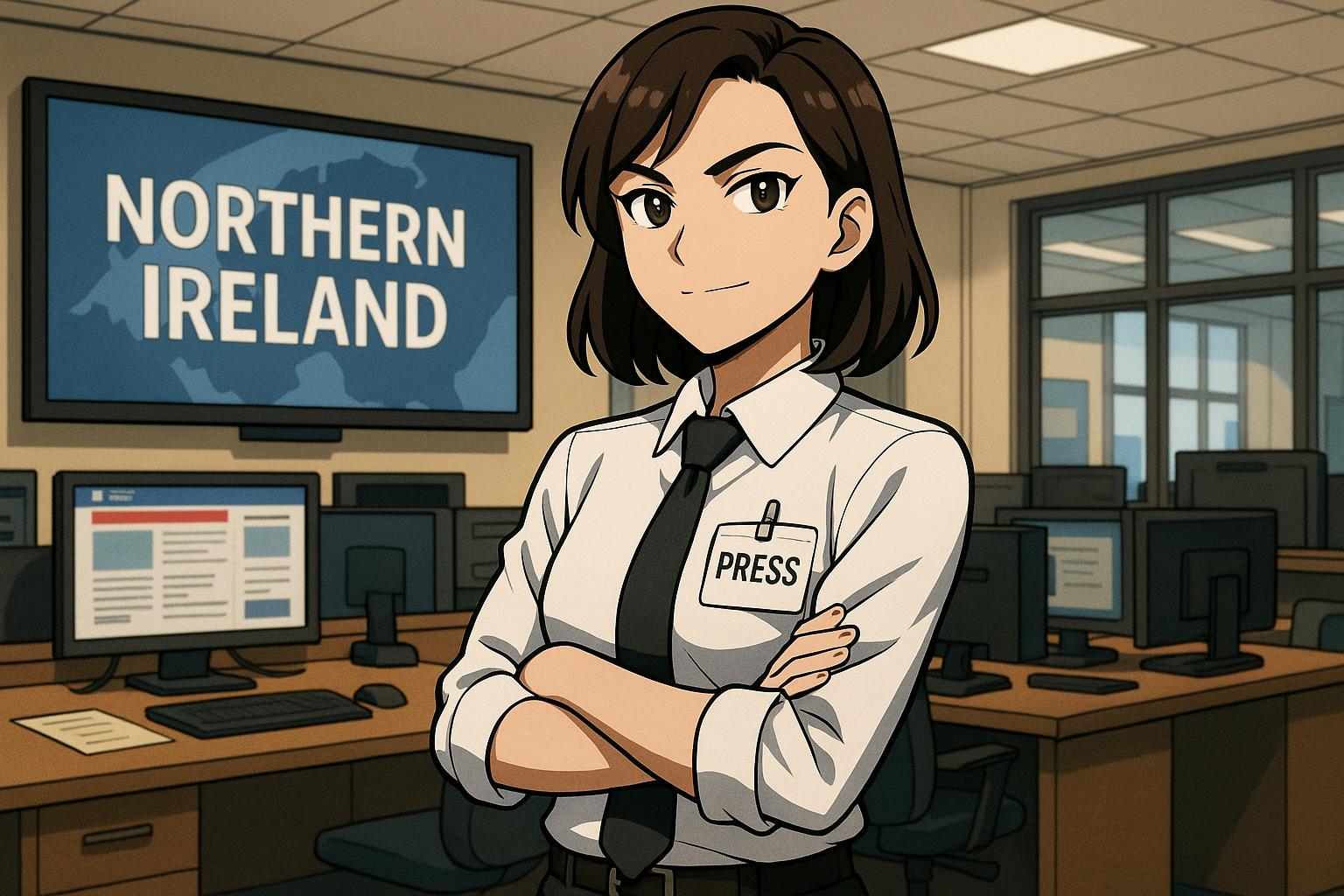In the often tumultuous arena of Northern Ireland’s media landscape, Anne Hailes has carved a niche for herself as a pioneering journalist, tackling not only pressing social issues but also confronting deep-seated gender biases that have pervaded the industry for decades. Referred to as the "first lady of journalism" in Northern Ireland, Hailes has recounted her unique approach to challenging sexism during her career, a journey marked by both resilience and defiance against established norms.
In a time when women were not always afforded seriousness within the media, Hailes made headlines not just with her stories but with her wardrobe choices. She often donned a shirt and tie, a sartorial statement that sparked conversations about traditional gender roles. The visual rebellion was perhaps as impactful as her writings, symbolising a need to dismantle barriers that confined women to outdated expectations, such as the societal obligation of domestic duties. “Women were expected to prepare meals and iron shirts for their husbands,” Hailes reflects in her commentary, underscoring the necessity for shared responsibilities in contemporary relationships.
Despite the progress made since her early days, Hailes points out that the ‘glass ceiling’ persists, particularly in leadership and decision-making roles across various sectors, including media. A recent study indicates that women remain significantly underrepresented in political reporting, with only 24% of editorial staff in Belfast newspapers being female and just 13% occupying management positions. This underrepresentation is compounded by systemic issues where women’s contributions are often relegated to 'soft' news areas such as health and lifestyle rather than more prestigious political coverage, a phenomenon described as 'ghettoisation' by industry observers.
The cultural dynamics within the media further exacerbate these challenges. Women, including Hailes, have often found themselves under scrutiny for their appearance, an expectation that is starkly contrasted with that faced by their male counterparts. This distinction not only reflects societal biases but also highlights the ongoing struggle for equal recognition and respect in a field dominated by male voices.
Hailes has actively spoken out on these issues, participating in events such as the recent International Women’s Day gathering in Belfast. Organised by Women in Media Belfast, the event focused on 'Embrace Equity,' shining a light on the hurdles that women in journalism continue to encounter and advocating for greater representation. Her presence at such forums underscores her commitment to advancing gender equity and her belief in the collective power of women advocating for change.
Moreover, the discourse surrounding gender equality has evolved, with terms like 'misogyny' often surfacing in conversations about sexism. However, Anne Harris, in an opinion piece, cautions against the overuse of such terminology, arguing that doing so could dilute its significance. This notion reflects a broader need for precise language in addressing the complexities of gender discrimination and the varying degrees of sexism that can manifest in different contexts.
As Hailes continues her work, her influence extends beyond mere journalism; she is a catalyst for change within an industry that still needs to reckon with its gender biases. The legacy she has built enables newer generations of women journalists to forge their paths, emboldened by the progress she has made as both a pioneer and a role model.
In this ongoing struggle for equality, Hailes exemplifies how one can challenge conventions—through both actions and words—creating ripples of change for women in media and beyond. The path may remain fraught with challenges, but leaders like Hailes remind us that persistent advocacy and visibility are vital to addressing entrenched inequalities.
Reference Map
- Paragraph 1: 1, 5
- Paragraph 2: 1, 2
- Paragraph 3: 3
- Paragraph 4: 3, 6
- Paragraph 5: 6
- Paragraph 6: 4
- Paragraph 7: 1, 2, 6
- Paragraph 8: 1, 2, 7
Source: Noah Wire Services
